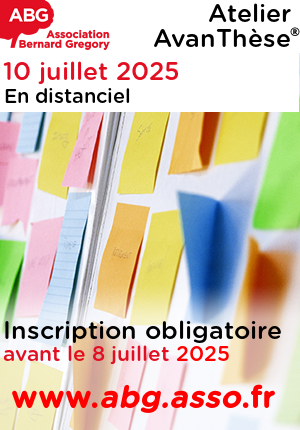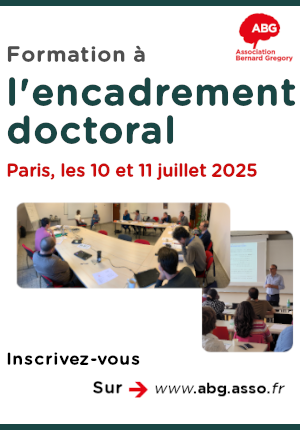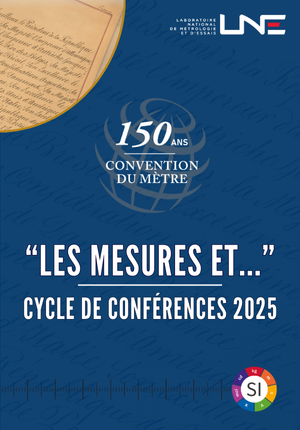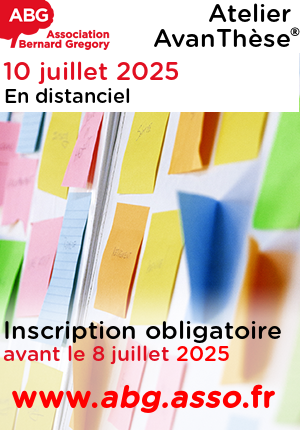CONCEPTION, REALISATION ET EVALUATION D'UNE SONDE MATRICIELLE A BASE DE MEMS ACOUSTIQUES POUR DE L'IMAGERIE ULTRASONORE PASSIVE : APPLICATION AU SUIVI DE L'OUVERTURE DE LA BARRIÈRE HEMATO-ENCEPHALIQUE PAR VOIE ULTRASONORE // Design, Implementation, and Ev
|
ABG-129994
ADUM-63690 |
Thesis topic | |
| 2025-03-26 | Other public funding |
Université de Tours
TOURS - France
CONCEPTION, REALISATION ET EVALUATION D'UNE SONDE MATRICIELLE A BASE DE MEMS ACOUSTIQUES POUR DE L'IMAGERIE ULTRASONORE PASSIVE : APPLICATION AU SUIVI DE L'OUVERTURE DE LA BARRIÈRE HEMATO-ENCEPHALIQUE PAR VOIE ULTRASONORE // Design, Implementation, and Ev
- Electronics
Ultrasons, Imagerie médicale, Transducteurs, MEMS, Microélectronique, Biomedical
Ultrasound, Medical imaging, Transducers, MEMS, Microelectronic, Biomedical
Ultrasound, Medical imaging, Transducers, MEMS, Microelectronic, Biomedical
Topic description
Les transducteurs ultrasonores micro-usinés sont des MEMS (MicroElectroMechanicalSystems) acoustiques que l'on utilise pour émettre et recevoir des ondes ultrasonores. Leur principale application concerne l'imagerie médicale. Il existe deux catégories de MEMS acoustiques, 1) les PMUT (Piezoelectric Micromachined Ultrasonic Transducers) pour lesquels l'actionnement du MEMS (ou micro-membranes) se fait au moyen d'un matériau piézoélectrique et 2) les CMUT (Capacitive Micromachined Ultrasonic Transducers) pour lesquels les micro-membranes sont actionnées par des forces électrostatiques. Un des principaux atouts du CMUT réside dans sa capacité à détecter des ondes ultrasonores de très faible amplitude, du fait qu'il s'agisse d'un récepteur capacitif (qui fonctionne comme un microphone audio), qui, par nature, apporte très peu de bruit électronique et fonctionne dans une très large bande de fréquences. Dans le cadre de travaux de recherche précédents, le laboratoire BioMAPS, associé avec le laboratoire GREMAN a eu l'opportunité de démontrer l'efficacité de ces technologies dans le cadre d'essais in-vitro, d'ouverture de la barrière hémato-encéphalique (BHE), puis pré-cliniques menés sur le petit animal [1][2]. Le protocole d'ouverture de la BHE consiste à injecter des microbulles que l'on actionne au moyen d'un faisceau ultrasonore basse fréquence (typiquement 1 MHz). Ces dernières, au contact du tissu cérébral, par vibration, vont ouvrir de manière réversible la barrière hémato-encéphalique (processus de sonoporation), et ainsi, permettre de laisser passer des agents thérapeutiques. Ce procédé de thérapie nécessite un contrôle extrêmement précis du processus de sonoporation. On écoute, pour cela, les ultrasons ré-émis par les microbulles, lesquelles s'étendent typiquement de 1 à 5 fois la fréquence ultrasonore d'excitation des micro-bulles. Dans le cadre des travaux antérieurs [1][2], menés avec un simple transducteur mono-élément nous avons été capable de détecter des ultrasons avec des niveaux de pression extrêmement bas (quelques centaines de Pascal) pour une bande de fréquence allant de 1 MHz à 8 MHz. Nous souhaitons étendre ces travaux (ANR SENSICAV 2025-2028) afin de construire une matrice de transducteurs (taille 13x13 mm2) CMUT comportant typiquement une centaine d'éléments, avec comme bande de fréquence visée 400 kHz-2MHz. Il s'agira d'utiliser deux matrices identiques afin d'exploiter les ultrasons ré-émis pour faire de l'imagerie acoustique passive, et ainsi, permettre de localiser la zone où les micro-bulles agissent et interagissent avec les tissus. Cette phase de localisation permettra d'affiner le positionnement du transducteur d'excitation basse fréquence (pilotage par un robot asservi par les matrices CMUT), et ainsi améliorer l'efficacité du traitement thérapeutique par un ciblage plus précis.
L'objectif de ce travail de thèse porte sur la partie conception, fabrication et intégration de la matrice CMUT, menée en collaboration avec la société VERMON partenaire du projet ANR SENSICAV.
L'objectif de ce travail de thèse porte sur la partie conception, fabrication et intégration de la matrice CMUT, menée en collaboration avec la société VERMON partenaire du projet ANR SENSICAV. Cela comprend plusieurs axes de travail :
- Utilisation de modèle électroacoustiques afin de concevoir les CMUT,
- Concevoir des masques pour la partie process microélectronique,
- Concevoir et développer les briques d'intégration 3D de la sonde matricielle,
- Caractériser les puces CMUT fabriquées,
- Tester et évaluer sur plateforme d'imagerie ultrasonore les sondes CMUT.
------------------------------------------------------------------------------------------------------------------------------------------------------------------------
------------------------------------------------------------------------------------------------------------------------------------------------------------------------
Micro-machined ultrasonic transducers are acoustic MEMS (MicroElectroMechanical Systems) used to emit and receive ultrasonic waves. Their main application is in medical imaging. There are two categories of acoustic MEMS: 1) PMUTs (Piezoelectric Micromachined Ultrasonic Transducers), where the actuation of the MEMS (or micro-membranes) is done using a piezoelectric material, and 2) CMUTs (Capacitive Micromachined Ultrasonic Transducers), where the micro-membranes are actuated by electrostatic forces. One of the main advantages of CMUTs lies in their ability to detect very low amplitude ultrasonic waves, as they are capacitive receivers (working like an audio microphone), which inherently produce very little electronic noise and operate over a very wide frequency band. As part of previous research, the BioMAPS laboratory, in collaboration with the GREMAN laboratory, had the opportunity to demonstrate the effectiveness of these technologies in vitro for blood-brain barrier (BBB) opening trials and pre-clinical studies on small animals [1][2]. The BBB opening protocol involves injecting microbubbles that are actuated by a low-frequency ultrasonic beam (typically 1 MHz). These microbubbles, upon contact with brain tissue, will reversibly open the blood-brain barrier through vibration (a process called sonoporation), thus allowing therapeutic agents to pass through. This therapeutic process requires extremely precise control of the sonoporation process. To achieve this, the re-emitted ultrasound waves from the microbubbles are listened to, which typically extend from 1 to 5 times the excitation frequency of the microbubbles. In previous work [1][2], conducted with a simple single-element transducer, we were able to detect ultrasound at extremely low pressure levels (a few hundred Pascals) across a frequency range from 1 MHz to 8 MHz. We aim to extend this work (ANR SENSICAV 2025-2028) by developing a CMUT transducer matrix (13x13 mm²) typically consisting of about a hundred elements, targeting a frequency range of 400 kHz to 2 MHz. The goal is to use two identical matrices to exploit the re-emitted ultrasound for passive acoustic imaging, thereby localizing the region where the microbubbles are acting and interacting with the tissues. This localization phase will help refine the positioning of the low-frequency excitation transducer (controlled by a robot driven by the CMUT matrices), thus improving the therapeutic treatment's effectiveness through more precise targeting.
The objective of this doctoral research focuses on the design, fabrication, and integration of the CMUT matrix, carried out in collaboration with VERMON, a partner in the ANR SENSICAV project. This includes several areas of work:
- Use of electroacoustic models to design the CMUTs,
- Designing masks for the microelectronic process,
- Designing and developing the 3D integration components for the matrix probe,
- Characterizing the manufactured CMUT chips,
- Testing and evaluating the CMUT probes on an ultrasound imaging platform
------------------------------------------------------------------------------------------------------------------------------------------------------------------------
------------------------------------------------------------------------------------------------------------------------------------------------------------------------
Début de la thèse : 01/10/2025
L'objectif de ce travail de thèse porte sur la partie conception, fabrication et intégration de la matrice CMUT, menée en collaboration avec la société VERMON partenaire du projet ANR SENSICAV.
L'objectif de ce travail de thèse porte sur la partie conception, fabrication et intégration de la matrice CMUT, menée en collaboration avec la société VERMON partenaire du projet ANR SENSICAV. Cela comprend plusieurs axes de travail :
- Utilisation de modèle électroacoustiques afin de concevoir les CMUT,
- Concevoir des masques pour la partie process microélectronique,
- Concevoir et développer les briques d'intégration 3D de la sonde matricielle,
- Caractériser les puces CMUT fabriquées,
- Tester et évaluer sur plateforme d'imagerie ultrasonore les sondes CMUT.
------------------------------------------------------------------------------------------------------------------------------------------------------------------------
------------------------------------------------------------------------------------------------------------------------------------------------------------------------
Micro-machined ultrasonic transducers are acoustic MEMS (MicroElectroMechanical Systems) used to emit and receive ultrasonic waves. Their main application is in medical imaging. There are two categories of acoustic MEMS: 1) PMUTs (Piezoelectric Micromachined Ultrasonic Transducers), where the actuation of the MEMS (or micro-membranes) is done using a piezoelectric material, and 2) CMUTs (Capacitive Micromachined Ultrasonic Transducers), where the micro-membranes are actuated by electrostatic forces. One of the main advantages of CMUTs lies in their ability to detect very low amplitude ultrasonic waves, as they are capacitive receivers (working like an audio microphone), which inherently produce very little electronic noise and operate over a very wide frequency band. As part of previous research, the BioMAPS laboratory, in collaboration with the GREMAN laboratory, had the opportunity to demonstrate the effectiveness of these technologies in vitro for blood-brain barrier (BBB) opening trials and pre-clinical studies on small animals [1][2]. The BBB opening protocol involves injecting microbubbles that are actuated by a low-frequency ultrasonic beam (typically 1 MHz). These microbubbles, upon contact with brain tissue, will reversibly open the blood-brain barrier through vibration (a process called sonoporation), thus allowing therapeutic agents to pass through. This therapeutic process requires extremely precise control of the sonoporation process. To achieve this, the re-emitted ultrasound waves from the microbubbles are listened to, which typically extend from 1 to 5 times the excitation frequency of the microbubbles. In previous work [1][2], conducted with a simple single-element transducer, we were able to detect ultrasound at extremely low pressure levels (a few hundred Pascals) across a frequency range from 1 MHz to 8 MHz. We aim to extend this work (ANR SENSICAV 2025-2028) by developing a CMUT transducer matrix (13x13 mm²) typically consisting of about a hundred elements, targeting a frequency range of 400 kHz to 2 MHz. The goal is to use two identical matrices to exploit the re-emitted ultrasound for passive acoustic imaging, thereby localizing the region where the microbubbles are acting and interacting with the tissues. This localization phase will help refine the positioning of the low-frequency excitation transducer (controlled by a robot driven by the CMUT matrices), thus improving the therapeutic treatment's effectiveness through more precise targeting.
The objective of this doctoral research focuses on the design, fabrication, and integration of the CMUT matrix, carried out in collaboration with VERMON, a partner in the ANR SENSICAV project. This includes several areas of work:
- Use of electroacoustic models to design the CMUTs,
- Designing masks for the microelectronic process,
- Designing and developing the 3D integration components for the matrix probe,
- Characterizing the manufactured CMUT chips,
- Testing and evaluating the CMUT probes on an ultrasound imaging platform
------------------------------------------------------------------------------------------------------------------------------------------------------------------------
------------------------------------------------------------------------------------------------------------------------------------------------------------------------
Début de la thèse : 01/10/2025
Funding category
Other public funding
Funding further details
ANR Financement d'Agences de financement de la recherche
Presentation of host institution and host laboratory
Université de Tours
Institution awarding doctoral degree
Université de Tours
Graduate school
552 Energie, Matériaux, Sciences de la Terre et de l'Univers - EMSTU
Candidate's profile
Le candidat est un Ingénieur de niveau Bac+5 ou Master 2 disposant de solides connaissances en instrumentation, mesure et systèmes électroniques. Il est demandé que le candidat ait quelques compétences en matériaux et procédés pour la microélectronique et/ou procédés pour le prototypage électronique. Des connaissances sur les signaux ultrasonores ou la propagation d'ondes, seront un plus. Un bon niveau en anglais (écrit et oral) est également nécessaire.
The candidate is a graduate Master degree student with strong skills in instrumentation, measurement, and electronic systems. The candidate should have some expertise in materials and processes for microelectronics and/or processes for electronic prototyping. Knowledge of ultrasonic signals or wave propagation will be a plus. A good level of English (both written and spoken) is also required.
The candidate is a graduate Master degree student with strong skills in instrumentation, measurement, and electronic systems. The candidate should have some expertise in materials and processes for microelectronics and/or processes for electronic prototyping. Knowledge of ultrasonic signals or wave propagation will be a plus. A good level of English (both written and spoken) is also required.
2025-06-30
Apply
Close
Vous avez déjà un compte ?
Nouvel utilisateur ?
More information about ABG?
Get ABG’s monthly newsletters including news, job offers, grants & fellowships and a selection of relevant events…
Discover our members
 Généthon
Généthon  ASNR - Autorité de sûreté nucléaire et de radioprotection - Siège
ASNR - Autorité de sûreté nucléaire et de radioprotection - Siège  MabDesign
MabDesign  Institut Sup'biotech de Paris
Institut Sup'biotech de Paris  SUEZ
SUEZ 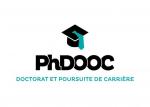 PhDOOC
PhDOOC  Aérocentre, Pôle d'excellence régional
Aérocentre, Pôle d'excellence régional 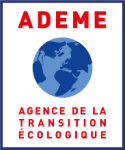 ADEME
ADEME  ONERA - The French Aerospace Lab
ONERA - The French Aerospace Lab  Groupe AFNOR - Association française de normalisation
Groupe AFNOR - Association française de normalisation  CASDEN
CASDEN  Laboratoire National de Métrologie et d'Essais - LNE
Laboratoire National de Métrologie et d'Essais - LNE  Ifremer
Ifremer  Tecknowmetrix
Tecknowmetrix  TotalEnergies
TotalEnergies  CESI
CESI  MabDesign
MabDesign 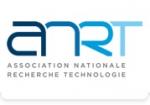 ANRT
ANRT  Nokia Bell Labs France
Nokia Bell Labs France



